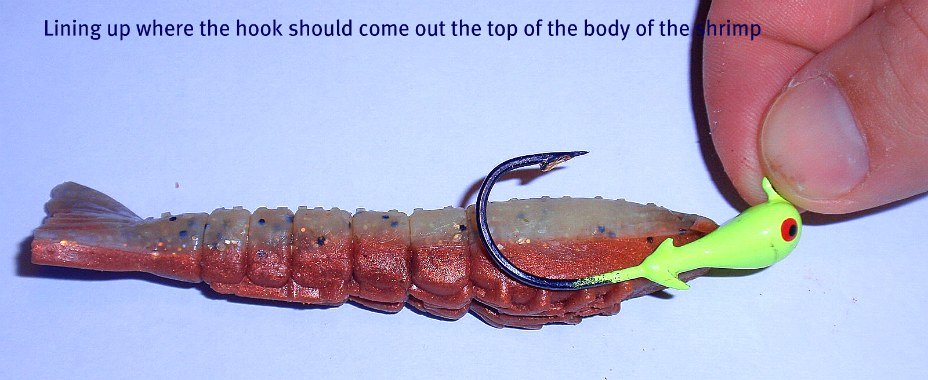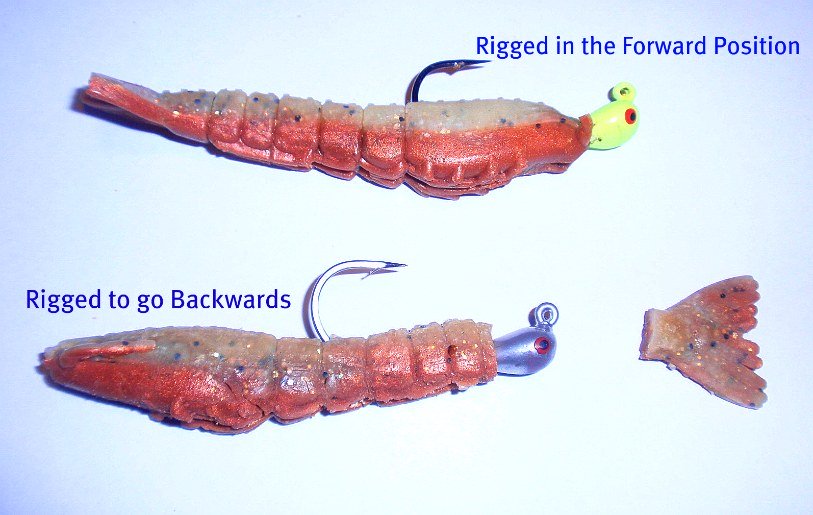Rigging Gulp Shrimp
There are a few different ways when it comes to rigging gulp shrimp.
Some anglers like to rig gulp shrimp so it moves along in the forward position while others prefer to rig the shrimp so it moves in reverse or backwards.
Rigging Gulp shrimp weedless is another option that works very well, I use this many times when fishing grass flats for snook, redfish and trout.
A Gulp shrimp and popping cork are a very popular way to fish these baits, this works great for redfish, trout and many other species.
Here I will explain how to rig a gulp shrimp where it moves in the forward or backward position.
I have caught many fish both ways but I normally rig my shrimp in the forward position.
I have fished all over Florida and rarely do I ever use a jig head heavier than a 1/4oz so most cases a 1/16oz - 1/4oz jig head will be all that is needed but there are certain scenarios that require a heavier jig head.
When sight fishing for redfish during the winter I won't use a jig head at all.
The reason behind this is that redfish are very spooky during the winter and most of the time you are in very shallow water, so rigging your Gulp shrimp on a regular hook will be less weight which allows your bait to land softer than with a jig head.
If you want to use this technique just follow the steps below with a regular hook rather than a jig head.
If you want your shrimp to move forward, first get an idea where the hook should pop out of the body of the shrimp.
If the shrimp is not threaded on the hook far enough it will fall off the jig head easy and will not look right.
On the other hand if the shrimp is threaded on the hook too far it will not look very natural and may spin excessively on retrieval.
You want the body of the shrimp to be straight once the hook/jig head is in place as if there is no hook in the body of the shrimp at all.
To rig the shrimp where it will move backwards follow the steps above just cut off the tail and insert the hook from the tail end of the shrimp.
If you are using any of the gulp baits don't forget to remove them from your hook or jig head at the end of the day.
If forgotten they will dry up and are next to impossible to get off!
Return to Florida Fishing Insider Home page

